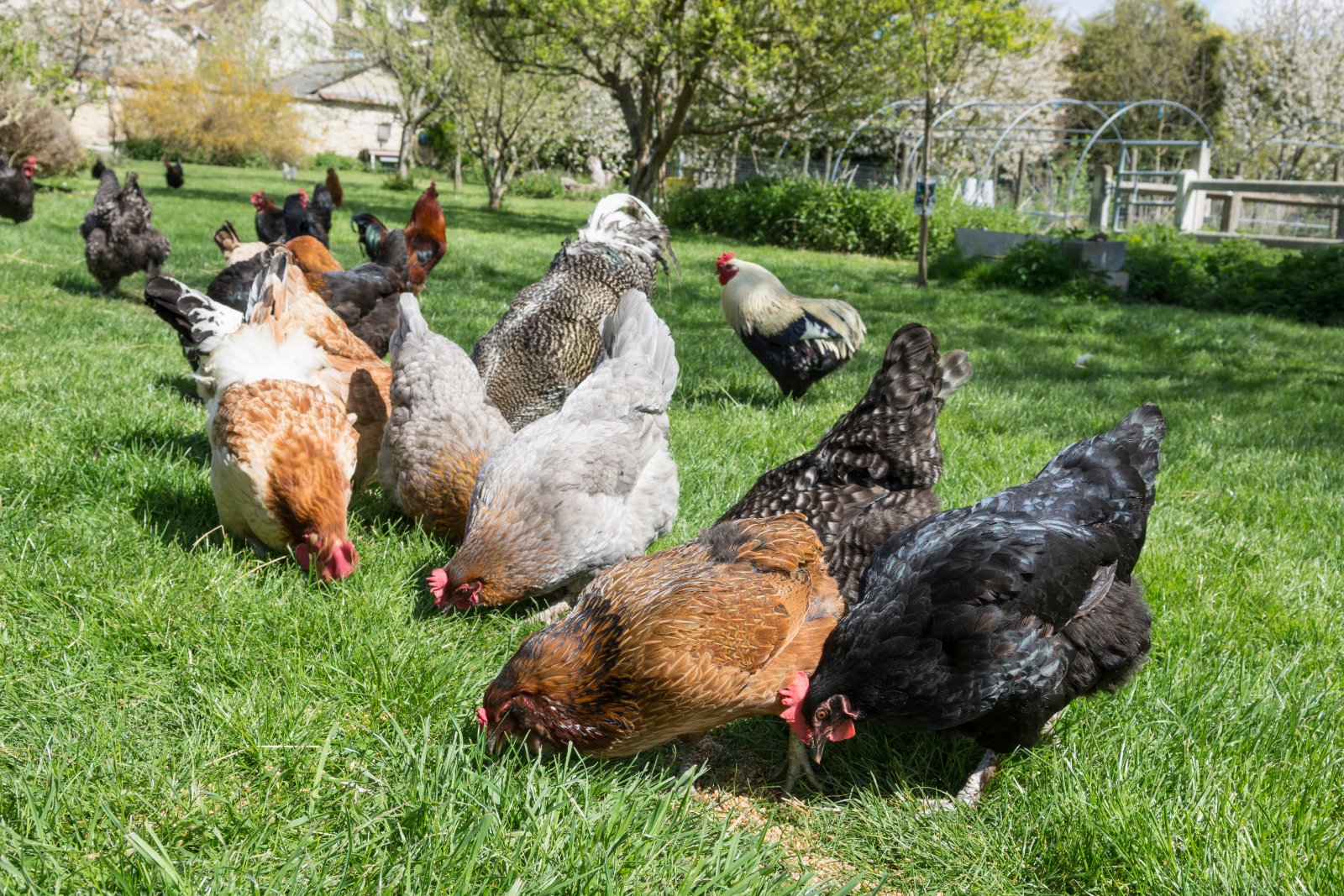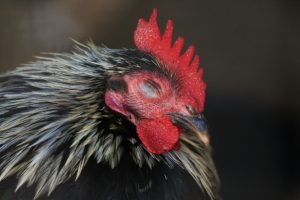Whether you’re planning your first flock or thinking about expanding, choosing the right number of chickens can make all the difference in creating that perfect backyard experience. Let’s explore how different flock sizes can suit your lifestyle and outdoor space.
Small Flocks (3-5 Chickens): the Perfect Size for Starters and Singles
A small flock is ideal for those with modest-sized suburban yards, or for singles and couples who just don’t need large amounts of fresh eggs. A compact flock can fit beautifully into your existing garden space while leaving plenty of room for other activities.
Benefits of Starting Small
With 3-5 chickens, expect 15-25 fresh eggs a week during peak laying seasons – perfect for a small household. A small flock requires minimal setup costs, making them budget-friendly as well as low maintenance. A standard 4×6 foot (1.2×1.8 meter) coop with a 10×10 foot (3×3 meter) run provides ample space for these feathered friends to thrive.
Keeping a limited number of birds also means each chicken can receive individual attention, letting each chicken’s personality shines through. These groups also work wonderfully for incorporating chickens into garden maintenance, as they can help with pest control and soil cultivation without overwhelming the space.
Considerations for Small Flocks
The main challenge with smaller flocks revolves around chicken sociology. Chickens form close bonds, and losing even one bird can notably impact the group’s dynamics.
Mid-Sized Flocks (7-12 Hens): Great for Families
A mid-sized flock opens up new possibilities while remaining comfortably manageable. This range often hits the sweet spot for experienced keepers.
The Joy of More
With a mid-sized flock, the backyard transforms into a space of constant activity. Depending on the exact number of chickens, your flock can produce a generous 35-60 eggs weekly during peak laying times – plenty for baking, sharing with neighbors, or even selling extras. You can also keep more different breeds, creating a variety of egg colors that make gathering eggs feel like discovering treasures.
Mid-sized flocks create fascinating social dynamics to observe. Watching chickens establish their pecking order, form friendships, and go about their daily routines provides endless entertainment. These flocks also work wonderfully for converting kitchen scraps into garden fertilizer while helping to maintain pest control in larger garden spaces.
A somewhat bigger flock also allows you to keep a rooster with your hens without it being too much; one male with 2-3 females might wear them out, while you can easily keep your cockerel with a dozen chickens without physical repercussions.
Managing Mid-Sized Groups
Keeping 7-12 chickens does require more thoughtful planning than a small flock.
- The coop needs to provide at least 6×8 feet (1.8×2.4 meters) of space, with a run of 15×20 feet (4.6×6.1 meters) or larger if the chickens can’t free-range daily.
- Feed costs increase proportionally, though you may find the extra eggs offset these expenses.
- Care routines like feeding and cleaning take a bit longer, but many chicken keepers find this time enjoyable – it’s a perfect excuse to spend more time outdoors among their feathered friends.
Larger Hobby Flocks (15+ Chickens): For Dedicated Enthusiasts
When chicken keeping becomes a true passion or when you need lots of fresh eggs every day, larger flocks offer abundant rewards. These flocks suit experienced keepers who have the space, time, and budget to support a bigger flock.
The Benefits of Abundance
Larger flocks create a vibrant backyard ecosystem, with enough egg production to support regular selling, gifting, or running a bed & breakfast. The diverse social interactions between chickens provide fascinating entertainment, and the increased numbers allow for exploring various breeds and even raising/selling chicks. Plus, there’s nothing like seeing a big number of chickens all running and flying towards you at dinner time!
Managing the Numbers
Success with larger flocks demands exponentially more dedicated time for daily care and observation.
- The setup requires careful planning, with coops of 8×12 feet (2.4×3.7 meters) or larger and generously sized runs or the possibility to free-range over large amounts of space.
- Multiple feeding stations and comprehensive predator protection become essential.
- You may also not notice right away when one chicken is showing symptoms of sickness, and diseases might spread faster once they’re out; and treating 15+ chickens can make quite a dent in your free time!
- And while 3-10 chickens can easily free range without turning your backyard into a wasteland, 15+ chickens will need either a closed chicken run, or careful pasture rotation and management.
Finding Your Perfect Number
When deciding on flock size, consider these factors:
- Available garden space and local zoning requirements
- Time available for daily chicken care and interaction
- Budget for quality feed and supplies
- Desired egg production for household needs and sharing
- Plans for integrating chickens into garden maintenance
- Interest in photography and social media sharing
- Frequency of family visits and educational opportunities
The main consideration however would be that raising chickens as a hobby should bring joy rather than stress. The ideal flock size creates a harmonious balance between the pleasure of raising chickens and the practical aspects of their care.





0 Comments